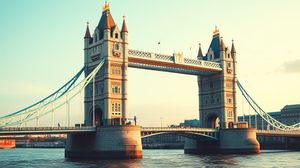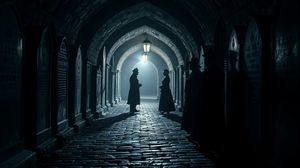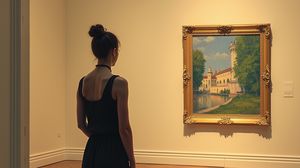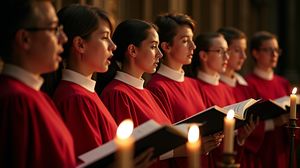
Waterloo Bridge is an iconic bridge in London spanning the River Thames. It connects the bustling area of Covent Garden on the north bank with the vibrant South Bank. The bridge offers one of the best views in the city, with a panorama that includes landmarks like the London Eye, St. Paul's Cathedral, and the Houses of Parliament.
Waterloo Bridge has a rich history dating back to its original construction in the early 19th century. However, the current bridge is a replacement completed in 1945, largely built by a workforce composed of women during World War II, earning it the nickname "The Ladies' Bridge."
An interesting fact about the bridge is that it was designed by Sir Giles Gilbert Scott, an architect who also designed the iconic red telephone box and Battersea Power Station, linking the bridge to other notable elements of London's architectural history.
Artists and photographers often flock to the bridge for its mesmerizing views, especially at sunset when the light casts a stunning glow over the Thames and the city beyond.
The bridge gets its name from the Battle of Waterloo in 1815, which was the final battle in the Napoleonic Wars, making it a structure with historical significance beyond its practical function.
Environmentally conscious travelers may be pleased to learn that Waterloo Bridge is lit using environmentally friendly methods, with the lighting designed to reduce light pollution and energy consumption.

Making the Most of Your Visit:
When you visit Waterloo Bridge, be sure to head there around sunset. The view is spectacular at this time, with the sun setting behind Big Ben and the Houses of Parliament creating a beautiful silhouette on the water.
You won't want to miss the view towards the west end of the bridge, where you can see iconic landmarks like the London Eye and the skyline of Westminster. Try to get a panoramic photo from this spot.
If you're a fan of architecture, take a moment to appreciate the bridge itself. Remember, it was constructed with significant input from women during World War II, which gives it a unique place in history as "The Ladies' Bridge."
For a quieter experience, consider visiting early in the morning. You'll get to see the city waking up and enjoy a peaceful moment on the bridge without the usual hustle and bustle of tourists.
Don't miss the views from both sides of the bridge. The northern view showcases the impressive St. Paul's Cathedral and the bustling streets of the City of London, while the south provides a more relaxed, cultural view of the South Bank.

Visiting Times & Costs:
Waterloo Bridge is open to the public 24 hours a day, seven days a week. There is no cost to access the bridge as it is a public road and footpath, allowing pedestrians, cyclists, and vehicles to cross freely.
As for accessibility, the bridge can accommodate wheelchair users and those with mobility challenges. However, visitors should be aware that reaching the bridge from certain nearby areas might involve navigating steps or steep ramps, so planning your route in advance using accessible pathways is advisable.

Address & Map:

Nearby:























